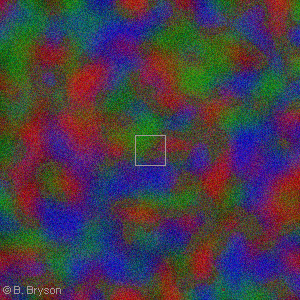Scale: 10-16 meters = 100 am = 100 attometers
Inside a ProtonThree of the most fundamental constants of physics are the gravitational constant, Planck's constant, and the speed of light. The gravitational constant determines the mutual gravitational attraction between two masses. Planck's constant is the fundamental constant of quantum physics as determined by Heisenberg's uncertainty principle. The speed of light relates matter and energy in Einstein's famous E = mc2. By appropriately combining these three universal constants, it is possible to arrive at a fundamental unit of length called the Planck length. (A universal constant is the same for anyone who measures it, anytime, anywhere, any when.) The value of the Planck length is approximately 10-35 meters. Physicists have determined an upper limit on the size of the quark based upon data from high energy collisions: Quarks must be smaller than 10-18 meters. This determination is based on the highest energy collisions currently attainable. There are some who believe that the next level of fundamental particle, if any exists, may be found at the incredibly small scale of the Planck length -- that the universe may be inherently grainy at 10-35 meters. There is a corresponding Planck time associated with the Planck length -- simply divide by the speed of light. This will produce the time required for a photon to travel a distance of 10-35 meters, or 10-44 seconds. Copyright © 2016 by Bruce Bryson |
